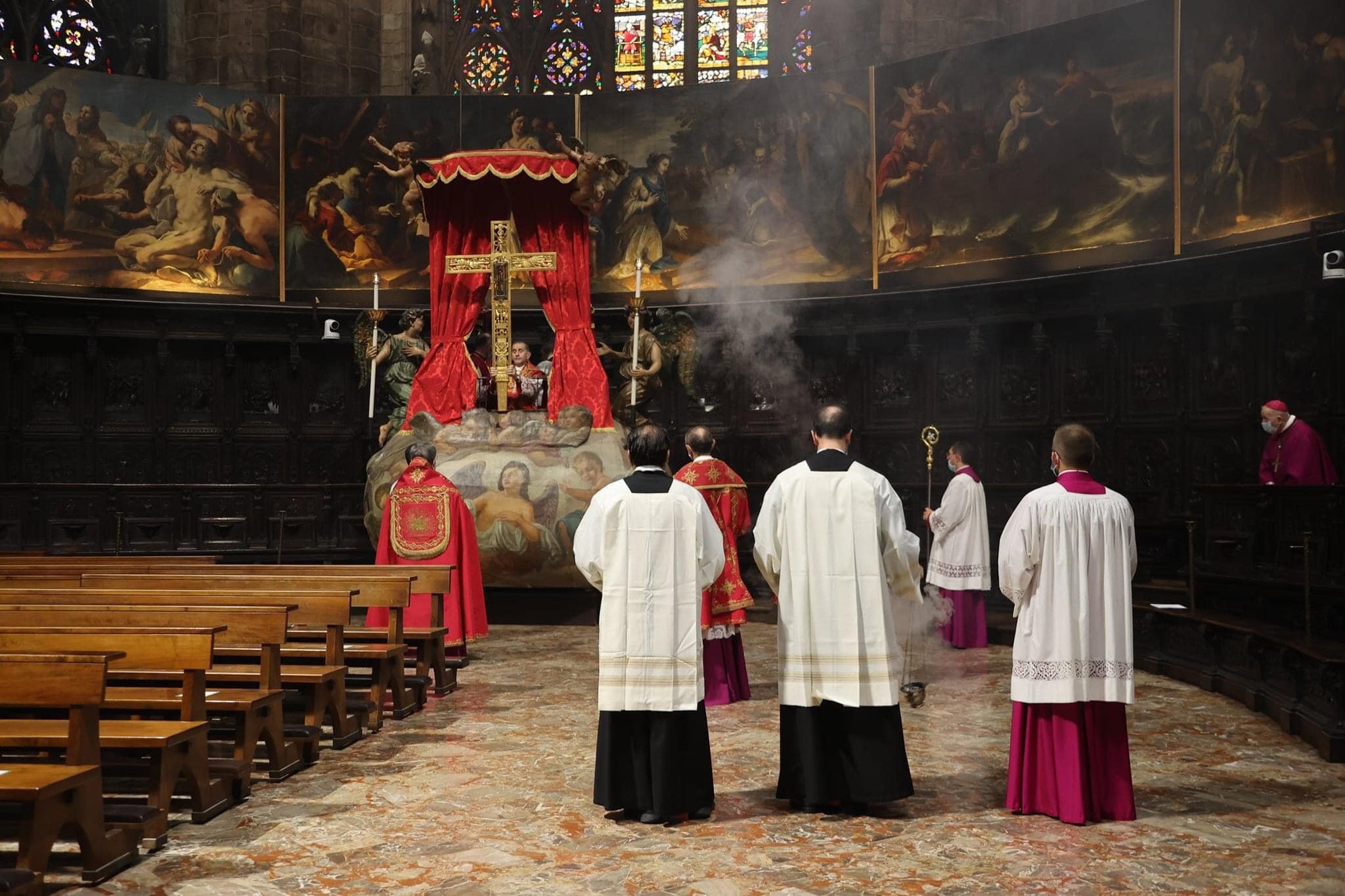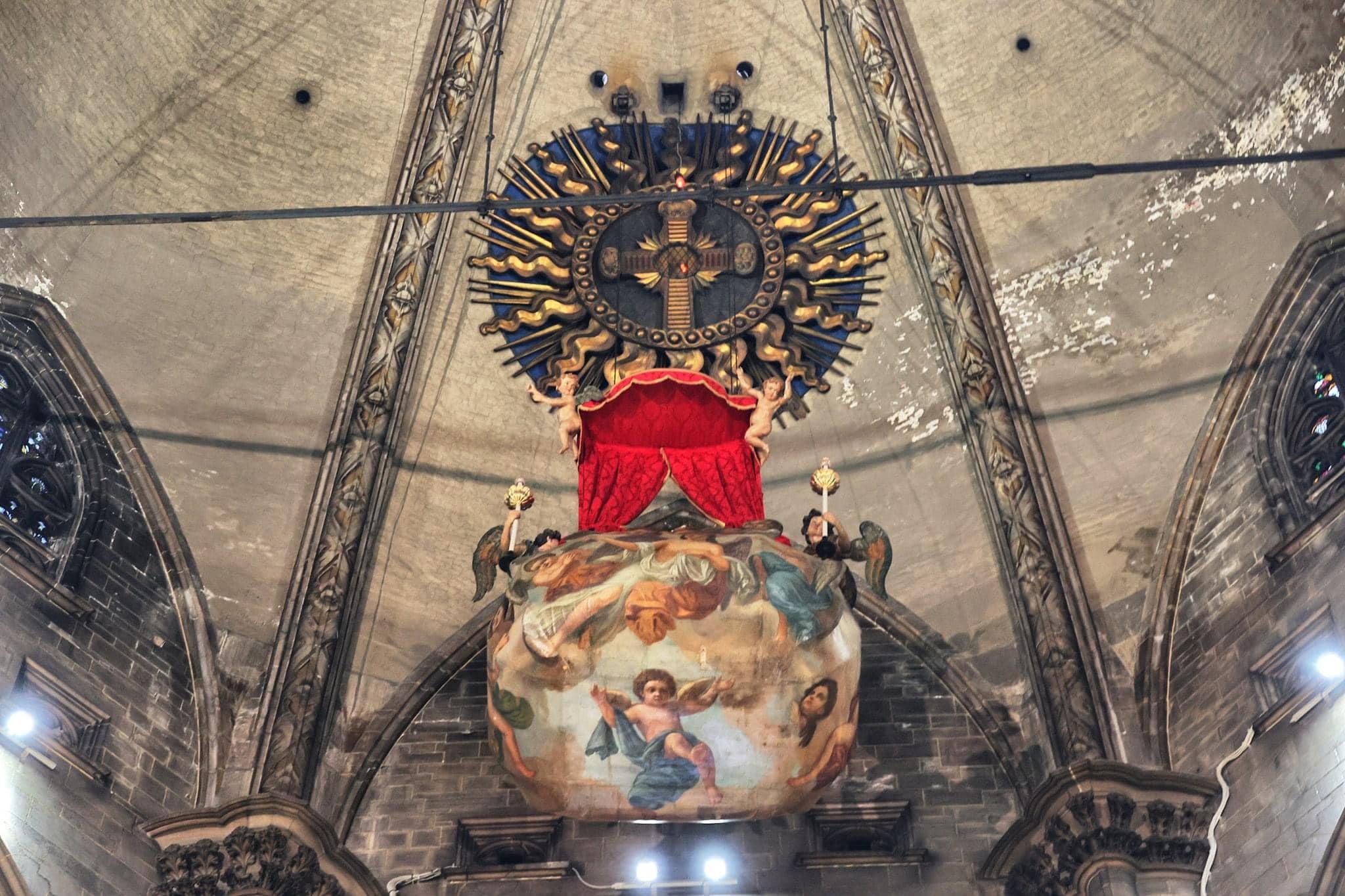The Holy Nail: Reflecting on Relics and the Need for Reformation
Last month one of Milan’s most ancient and bizarre events took place in the city’s famous Cathedral, the Duomo. At the far end of the cathedral’s apse, suspended forty meters above the floor, there is a round reliquary lit by a red light, visible to all who are in the pews. This is where Milan’s most precious relic is stored. According to Roman Catholic tradition, it was Empress Helena, mother of Constantine, who, in the fourth century, took it upon herself to find the “true” cross of Christ. It is said that once she found it, she sent a nail of the cross to her son Constantine, who then had it bent to fit the bridle of his horse. Constantine then passed it down to his son, Constantinius (Constantine II), who made his seat in Milan.
According to the Roman Catholic Church, the so-called “Holy Nail” was stored in Milan’s fourth-century basilica until the current cathedral was built. Every year since 1624, the Holy Nail is removed from its reliquary by the archbishop of Milan.
This is where it gets bizarre. The archbishop himself steps into a wooden contraption in the form of a cloud decorated with angels and is hoisted up forty meters to where the Holy Nail is kept. He then removes the nail from the reliquary and places it into a small cross. He is then lowered and says a mass. The cross containing the nail is then paraded around the cathedral.
Originally, the cross containing the Holy Nail was trotted out through the streets of Milan. In fact, it was Carlo Borromeo, archbishop of Milan and famous counter-reformer, who in the 16th century encouraged the veneration of the Holy Nail and brought the cross into the streets of Milan during the plague. (I’ve added a link below to a video if you’d like to watch this odd spectacle.)
When my family and I arrived in Italy, I was shocked to discover the vast number of relics and how they continue to be venerated by so many. In Florence there is a piece of the apostle Thomas’ index finger; in Perugia, they have Mary’s wedding ring; in Mantova, there is a clump of “holy dirt” that was allegedly stained with the blood of Christ as he died on the cross. The list seems endless. Nearly every major town has the body of a saint, a piece of an apostle, or a sliver of the cross. Although to many these relics and their veneration may seem rather ridiculous, they are in fact a major attraction among Italian Roman Catholics. If you watch the video of the ceremony, you’ll see that the massive cathedral in Milan is filled with worshipers craning their necks to get a glimpse of the Holy Nail. In fact, so many people want to attend this yearly spectacle that a reservation is necessary and often difficult to obtain. The Milanese are proud of this rite and proclaim it to be “bellissimo”, that is, something very beautiful and worthy of being seen.
The Roman Catholic church still offers, at various times, a host of plenary indulgences for pilgrimages and other acts of piety, including the visitation of relics. For example, the cathedral of Lourdes in France is quite open about the plenary indulgence policy for visiting relics:
“The Church intercedes with a plenary indulgence where the person must complete the indulgence act (in this case, visiting the relics), go to confession and communion (within ten days on either side of the indulgence), and pray for the intentions of the Pope. When we do these things and truly show we have taken to heart what we have done, a plenary indulgence is granted.”
It’s clear that, unlike other countries where the Reformation made a significant impact, Italy remains in the grip of Rome and its superstitions. Not much has changed here since Martin Luther quipped about his own country, Germany:
“What lies there are about relics! One claims to have a feather from the wing of the angel Gabriel, and the Bishop of Mainz has a flame from Moses’ burning bush. And how does it happen that eighteen apostles are buried in Germany when Christ had only twelve?”
Or, as John Calvin put it,
“Now let us consider how many relics of the true cross there are in the world. An account of those merely with which I am acquainted would fill a whole volume, for there is not a church, from a cathedral to the most miserable abbey or parish church, that does not contain a piece. Large splinters of it are preserved in various places, as for instance in the Holy Chapel at Paris, whilst at Rome they show a crucifix of considerable size made entirely, they say, from this wood. In short, if we were to collect all these pieces of the true cross exhibited in various parts, they would form a whole ship's cargo.”
Calvin goes on to say,
“The most absurd stories are also told respecting the manner in which various pieces of the cross were conveyed to the places where they are now shown; thus, for instance, we are informed that they were brought by angels, or had fallen from heaven. By these means they seduce ignorant people into idolatry, for they are not satisfied with deceiving the credulous, by affirming that pieces of common wood are portions of the true cross, but they pretend that it should be worshiped, which is a diabolical doctrine, expressly reproved by St Ambrose as a Pagan superstition.”
Knowing that these relics exist and that people clamor to see them believing that they have some kind of power leaves me heavy-hearted. That so much energy and devotion is still given to relics is tragic when Jesus himself told us as he suffered on the cross, “It is finished.” What was finished? The work the father gave him to do, namely, atone for the sins of all those who put their faith in Christ. As Paul tells us in Ephesians 2:8-9, “For by grace you have been saved through faith. And this is not your own doing; it is the gift of God, not a result of works, so that no one may boast.” All the merit we need to be right with God has been earned by Christ’s obedience and imputed to us by grace alone through faith alone. We do not need to look to a so-called nail of the cross to find hope, but to Christ’s finished work on the cross 2000 years ago. There is no place in the Christian life for venerating relics or seeking indulgences because, in his life, death, and resurrection, Christ has done everything necessary for our salvation. As a result, those who have received the forgiveness of sins and the righteousness of Christ live lives of gratitude in response.
This month, as Protestants all over the world remember and celebrate the Reformation and recall the transformative change that it brought to the church through the preaching of the Gospel, let’s not forget the darker corners of the globe that were not reached by the light of the Reformation, or where (as in Italy’s case) that light was quickly extinguished. The practice of venerating relics underscores the need for Reformation in Italy, which is still steeped in the traditions of Rome.
Will you join us in prayer? Will you intercede for the lost, whose faith is misplaced in trinkets and tradition? Pray that many would place their faith, not in relics, historical spectacles, or their own good works, but in the Person and finished Work of Christ. Pray that the Lord might grant a new Reformation in Italy.
Janie Brown



